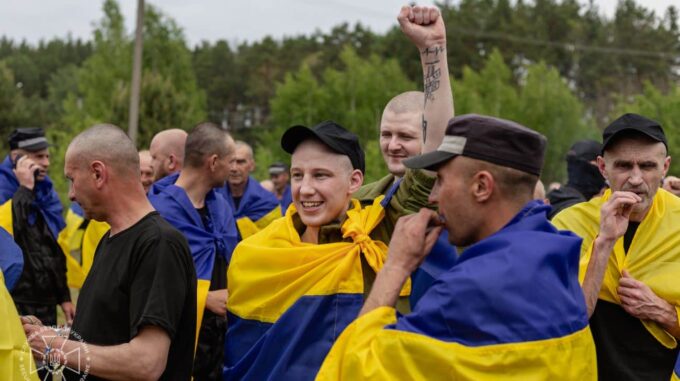In the Coordination Headquarters on the Treatment of Prisoners of War, the circumstances surrounding the absence of “Azovstal fighters” and individuals who have been missing since 2014 in Russian captivity were identified

The Ukrainian Coordination Headquarters on the Treatment of Prisoners of War published details regarding the reasons for the absence of certain individuals in the lists of those released during the large-scale exchange "1000 for 1000" of representatives of the legendary "Azov" regiment and persons who have been in Russian captivity since the early years of the Russian-Ukrainian conflict. Deputy Head of the Headquarters, Andriy Yusov, explained in a detailed comment to journalists that this process is actually a complex, multi-layered mechanism of mutual agreements involving both sides, and that it does not always account for the wishes of one of the parties. According to Yusov, the exchange occurs based on agreed lists, which are compiled separately by each side—Ukrainian and Russian. The Russian side determines whom it is willing to transfer to Ukraine, guided by its internal interests, and Ukraine, in turn, drafts its own list. However, this process is not perfect, and some prisoners remain outside the agreements due to internal politics or other factors. Yusov emphasized that every Ukrainian in Russian captivity deserves to return home. Ukraine tirelessly works under the difficult conditions of the full-scale war with Russia and does everything possible to free each of its citizens, including those defending Mariupol and other strategically important directions. He also highlighted that unjustified refusals by the Russians to exchange Ukrainian prisoners of war, especially since the start of their aggression in 2014, are a systemic problem. "Russia ignores our requests and refuses to return Ukrainians, claiming that not all are prisoners of war yet or citing other formal reasons. But this is a violation of international humanitarian law; it is another crime against humanity. We demand that every Ukrainian in captivity has the opportunity to return home," Yusov stated. The background of this tense process includes the first part of the agreements, conducted on May 23, when Ukraine and Russia, within the framework of the "1000 for 1000" exchange, managed to return 390 individuals—270 military personnel and 120 civilians. The following day, May 24, another 307 Ukrainian defenders returned from Russian captivity; all of them were men, military enlisted personnel, and non-commissioned officers. On May 25, the third stage took place, during which the Ukrainian side received another 303 of its defenders. However, the highly publicized discussions and criticism within journalistic circles were prompted by the fact that during the three days of negotiations and exchanges, "Azov fighters"—the defenders of the "Azov" regiment—and those who have been in captivity for over eight years since the beginning of Russian aggression in 2014 were left off the lists. Commander of the National Guard "Azov" Brigade, Colonel Denis ("Redis") Prokopenko, expressed doubts about the sincerity and interest of the authorities in returning exactly these fighters. Former Kremlin political prisoner and writer Stanislav Asseyev pointed out that among those freed during "1000 for 1000," there was no place for any civilian who has been in Russian captivity for eight years. This underscores once again how complex and tangled the issue of returning Ukrainians from Russian captivity is, and how important it is to make efforts to protect the rights of people trapped in the time of occupation and aggression. Thus, despite significant achievements in returning some Ukrainian citizens and military personnel, the problems of bringing back those who have been in Russian captivity since 2014 remain unresolved and require further diplomatic efforts and international pressure to protect Ukrainian rights and end violations of international humanitarian law.

